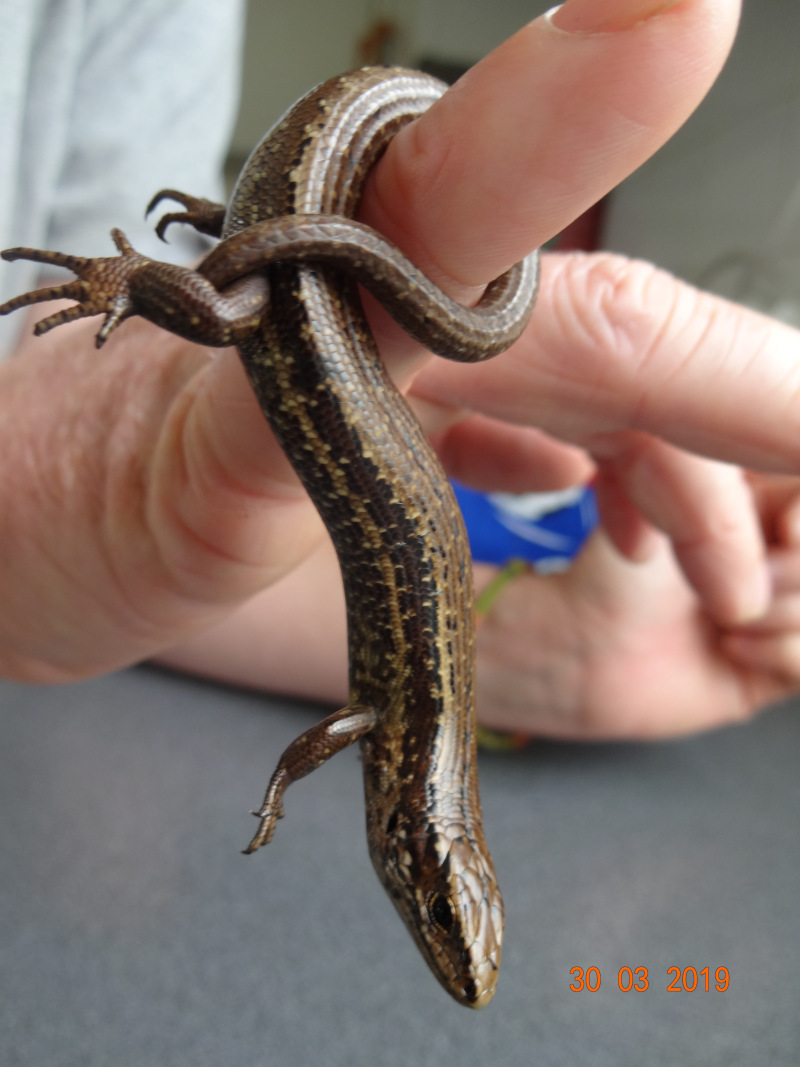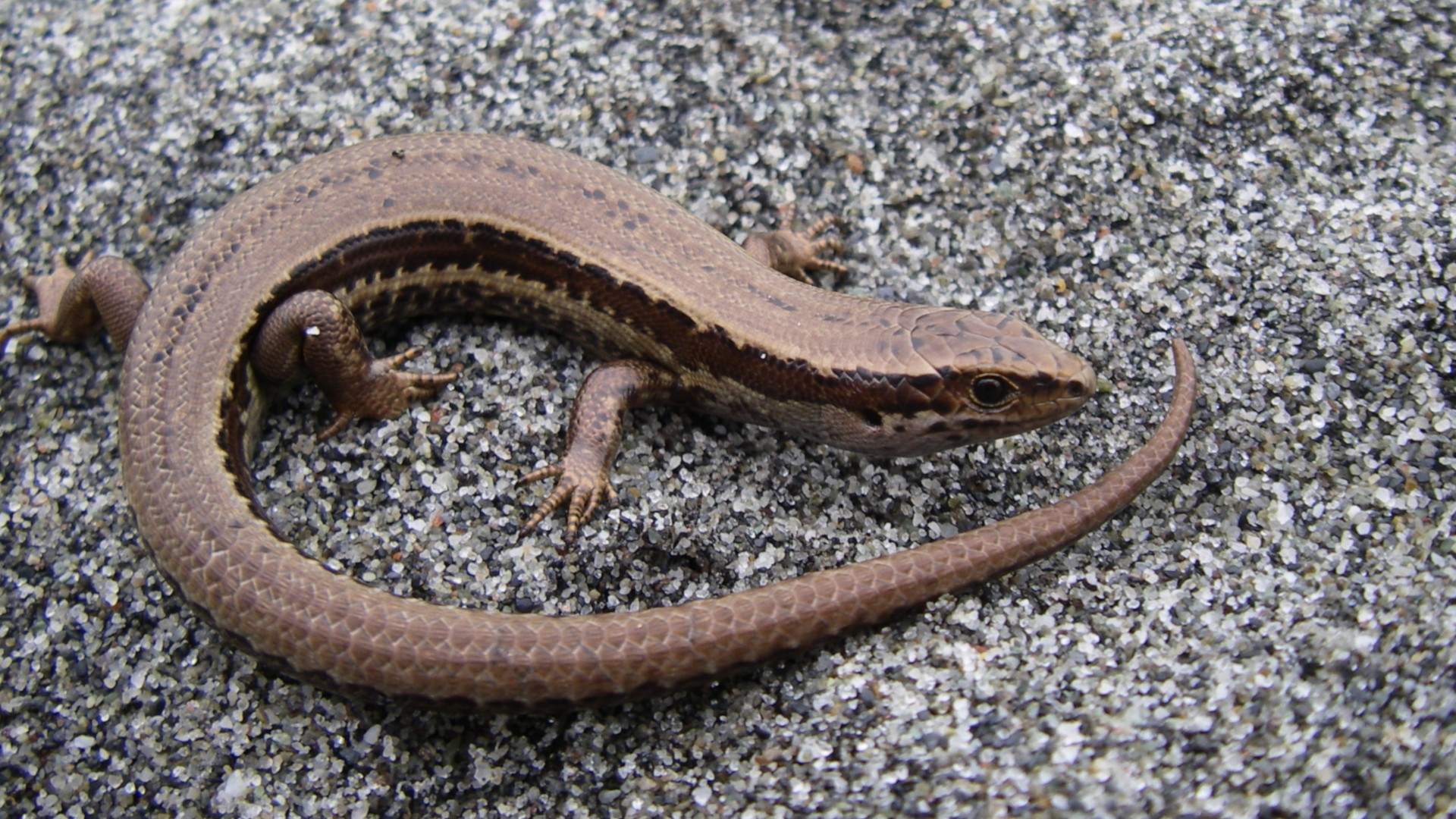In 1887 the Belgian-British zoologist George Albert Boulenger, who famously named more than 2,000 species around the world, scientifically described a slim New Zealand lizard he called Oligosoma infrapunctatum — the speckled skink.
 More than 130 years later, a new paper examines the genetics and morphology of speckled skinks from around New Zealand and comes up with a surprising conclusion: They’re actually at least six different species, one of which — ironically enough, the one first identified by Boulenger — may now be extinct.
More than 130 years later, a new paper examines the genetics and morphology of speckled skinks from around New Zealand and comes up with a surprising conclusion: They’re actually at least six different species, one of which — ironically enough, the one first identified by Boulenger — may now be extinct.
The research, published in the journal Zootaxa, builds upon work done over the past several years that analyzed and alternately named and renamed various populations of speckled skinks. Now, by examining the lizards’ physical characteristics and mitochondrial DNA, the researchers were able to conclusively determine that the speckled skink represents an entire species complex. Each species lives in a different part of the country and has small but significant variations in genetics, coloration, scale composition and limb structure.
There’s something they all have in common, though: None of them are doing very well, as the five remaining species all face enormous pressures from introduced predators and habitat loss. Using New Zealand’s classification system for endangered species, the paper recommends that two of the skink species should be considered as “nationally critical,” a third as “nationally vulnerable” and the final two as “at risk.”
The most endangered of these newly recognized species, now dubbed the Chesterfield skink (O. salmo), is an amazing reptile with a long, prehensile tail, a unique adaptation among New Zealand skink species. That unusual quality “suggests that this species used to spend a lot of time in shrubs and trees, using the tail to help move around,” says lead researcher Sabine Melzer, a biologist with the Auckland Council. Unfortunately that evolutionary advantage isn’t of much use to it anymore. Agricultural development for dairy cattle and farmed deer along with more recent coastal erosion have chipped away at the Chesterfield’s habitat and it’s now confined to a range of less than 0.004 square miles. That’s about the size of a Manhattan city block.

Another species, now named the Alborn skink (O. albornense) due to its only known location near the old Alborn Coal Mine on New Zealand’s South Island, is also quite rare. The paper cites a recent search that only turned up one skink within its 2-hectare range.
As for Boulenger’s original species, the paper describes it as “a complete enigma.” The researchers borrowed the holotype specimen from the British Museum in London and while they weren’t able to extract DNA, they were able to observe that it had physiological characteristics unlike any of the other living or museum specimens they examined. That and the fact that it hasn’t been officially observed since Boulenger’s time leads them to suspect it might be extinct. That’s admittedly hard to prove, though, since Boulenger acquired his specimen from someone else and never documented the location where it was collected.
So what comes next for these skinks? To protect the remaining species within this family, the researchers are calling for immediate conservation action to conserve their habitats from further development. “With these species now officially described, it is vital to protect the remaining populations of these ‘nationally critical’ species,” Melzer says.
The paper also recommends resurveying historic skink locations to determine if currently unknown populations still exist, as well as collecting more morphological data and genetic material for analysis. That’s particularly important since their results suggest that an additional three or more species, and possibly a subspecies, may remain to be identified. The public can help in these efforts by reporting any sightings.
And yes, that includes looking for what the researchers have now renamed Boulenger’s speckled skink, which has now been granted the original taxonomic name.
“It would be great to inspire more field work to find the ‘lost’ skink,” Melzer says, but she adds that looking for and studying what’s left is especially important. “There is definitely more work needed to resolve the rest of the speckled skink species complex.”
Melzer says she hopes the news of this possible extinction and the risks faced by other species will help to raise the profile of these small but important speckled skink species in the country.
“Lizards don’t get much of the limelight unfortunately,” she says, “but they’re such an integral part of New Zealand ecosystems.”
![]()



1 thought on “‘A Complete Enigma’ — New Zealand Lizard Declared Extinct 130 Years After Only Sighting”
Comments are closed.